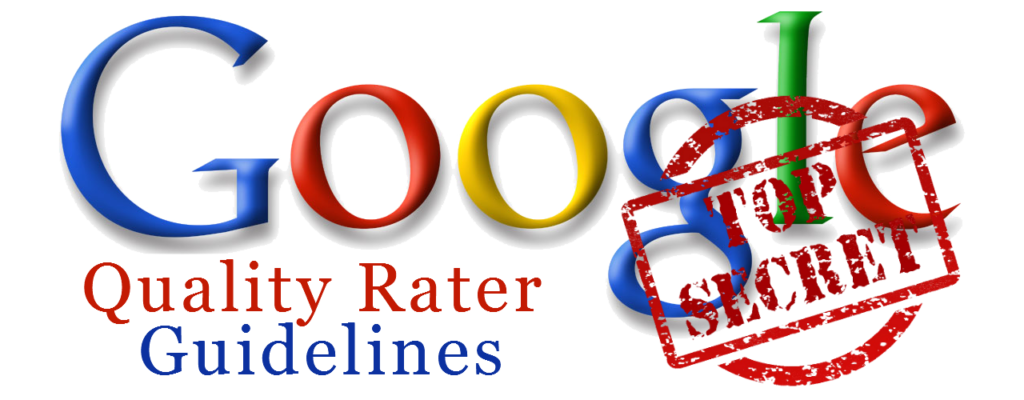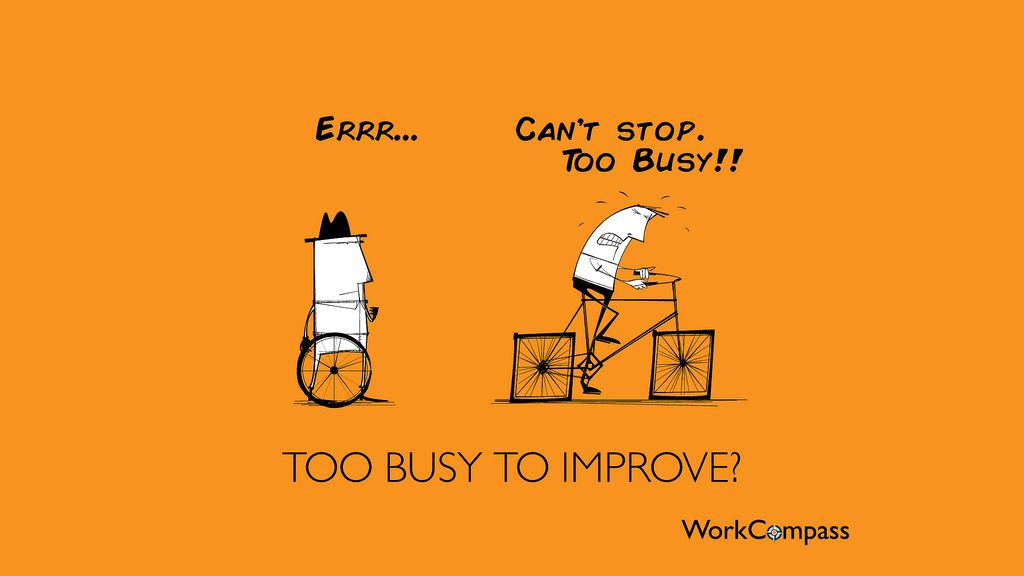- Blog Home
- Content Marketing
- Cathy L
- The Google Medic Update: How To Get Back That Traffic You Lost
The Google Medic Update: How to Get Back That Traffic You Lost

In early August 2018, many website owners woke up to a startling new reality. Where once they had brought in impressive numbers as the result of organic search engine hits, now traffic had significantly declined. In some cases, the results were dramatic: 70 percent drops reported to online forums.
Soon those webmasters discovered they weren't alone. Over the next few days, analysts deduced that well-known sites had big drops in traffic. A bit of basic detective work revealed that the biggest losers were those in the health, medical and YMYL (your money, your life) space.
So what happened?
According to Google, nothing unusual. The search engine giant tweeted on August 1 that it had, indeed, released an algorithm update. (Because of whom was effected, the tweak to the search engine's programming was dubbed "Google Medic.).
"This week we released a broad core algorithm update, as we do several times per year."
But what was more interesting was what Google didn't say. Although the health and wellness areas seemed to take the biggest hit, Google claimed the algorithm change was global and targeted all niches. Unlike with previous updates, they refused to say how many search queries were impacted.
In short, SEO experts were left to pretty much figure it out on their own -- which they have done so in an impressive manner.
Rank Ranger assessed the update from the perspective of rank stability. That is, how likely were search results to change prior to, and after, the Google Medic update. By far, the Health category showed the most dramatic shifts, with a 72.2 percent average position change.
Big Losers in the Google Medic Update
Because Google Medic was so wide-reaching, even small ecommerce websites were likely affected, either positively or negatively. But because of their existing large presence, sites like Rank Ranger were able to analyze changes in well-known domains. Loss of visibility was borne by bodybuilding.com (49 percent), prevention.com (56 percent) and verywellfit (29 percent).
Rank Ranger's analysis brought up an interesting point. Although disruption was most obvious in certain categories, not all of those sites took a hit. In fact, some seemed to get a big boost in ranking -- and the traffic that results -- after the roll out of Google Medic.
Big Winners in the Google Medic Update
According to Search Engine Land, who published data from Sistrix, Healthline.com had a 20 percent increase in visibility and Medlineplus.gov was up 17 percent. These are just two examples of sites who may be celebrating the new algorithm. Some well-known shopping sites were up as well. Carfax.com increased by a whopping 68 percent, rent.com up by 42 percent and eBay.com up by 18 percent.
It was clear then that the update caused a huge shuffling of results. According to Google, that's to make sure users of the search engine get the best results possible. But how do they determine what ranks high, and did that determination change with the introduction of Google Medic?
Google's Quality Rater Guidelines

It's true that a Google algorithm change isn't really out of the ordinary. According to Moz's list of confirmed (and unconfirmed) updates, Google Medic was just one of about a dozen updates this year. However, the changes in traffic patterns led some to conclude that Google's Quality Rater Guidelines might be a core reason.
Peter J. Meyers wrote in Moz that the Quality Rater Guidelines were updated shortly before the Google Medic rollout, but the timing probably signaled a shift in thinking at the search engine giant, rather than one change causing another:
"There's been some speculation that this update is connected to Google's recent changes to their Quality Rater Guidelines. While it's very unlikely that manual ratings based on the new guidelines would drive major ranking shifts (especially so quickly), it's entirely plausible that the guideline updates and this algorithm update share a common philosophical view of quality and Google's latest thinking on the subject."
So what are the quality rater guidelines? Well, quality raters have been on the case for a few years at Google. These are real people -- about 10,000 or so worldwide -- who are paid to conduct online searches and then rate the quality of the websites they find.
Jennifer Slegg, who has written extensively on Google's objectives in this area, told Search Engine Land in late July 2018 -- just as the guidelines were updated and about a week before the Google Medic rollout -- that Google was going to analyze website content with a more critical eye.
"The most noticeable for content creators is that Google wants their raters to not only look at the reputation of the website itself, but also the content creators themselves. This is one area that many sites fall down on."
What Kinds of Content Google Rewards
Of course, Google isn't confirming that. They tend to fall back on the guidance they have long given about how to build a website that meets the approval of the search engine and its algorithm. Google's tweet in August referred back to Google's messaging from March, which recommended webmasters focus on their page content.
"There's no 'fix' for pages that may perform less well other than to remain focused on building great content. Over time, it may be that your content may rise relative to other pages."
So, according to Google, that's the answer. Don't worry about what our algorithm is doing. Just keep creating great content, and eventually traffic will follow.
But what makes good content?
Opinions may vary, but it looks like it comes down to giving your readers a lot of what they want, backed by credentialing that shows you're the best website to give it. That sounds like a tall order, but the good news is that you probably have all the elements you need to create great content. You may just need to partner with an experienced content writer to make it come together in a way that will impress Google.
How to Improve Your Content
Ok, so let's assume you've been dinged by Google Medic. All is not lost. In all likelihood, you've discovered that some pages have held fast to their traffic while others have taken a deep dive into online obscurity.
If you've lost traffic on an important page, you don't necessarily have to start from scratch. You can do a "tune-up" to enhance the content you already have. This can include organization into more paragraphs and sub-headings, in order to give users a thorough overview and in-depth analysis of what they expect to find on that page.
Have it Match Search Intent
Query intent theory goes back several years. It is based on the idea that a search algorithm should go beyond the simple keywords and dive deep to what the user is actually looking for.
Think of it this way: a user searching "Shark Tank" may want to get the latest scoop on the television show, or see pictures of sea creatures held in captivity (in a shark tank). Query intent theory takes as much information as possible from the search query to send back the best results not just for what the user typed in, but what they want to actually read.
In order to make your content match user intent, give Google as much information as possible about what's on the page. Lots of informative sub-headings create a more complete picture of the content, so Google knows whether or not it's relevant.
And if you're thinking you want as many hits as possible -- even if a user found you back accident -- think again. A user who lands upon a summary of last week's episode of "Shark Tank" is going to click away very quickly to find the pictures of those sea mammals. The same is true of your business. Qualified traffic is what you need to arrive at your site, so they stick around to find out more about your company and actually spend a dollar or two.
Make it Longer
Google does not say that longer content makes for better rankings. But Can I Rank? offered some amazing insights into correlating factors to search visibility before and after the Medic update. Mobile experience and design were both positive factors -- in other words, giving users a good experience and making your site mobile-friendly contributed to better visibility.
What was also important was content length and content quality. Can I Rank? was quick to note that content length is a relative measure. You may want longer content compared to other sites in that same niche. Not all subjects require full ebooks to properly answer a search query, but some benefit from that in-depth coverage.
Can I Rank? went on to say that the difference here is that with Google Medic, YMYL sites were among the most affected. In that particular niche, longer, smarter content tends to be preferable and therefore will rank higher. The site notes that longer content in and of itself is not a sure-fire ticket to getting top spot on search results.
Can I Rank? also found content quality was a big factor in gaining or maintaining ground with the update. This was defined by the use of images and illustrations, strong content organization with bullets and subheadings, as well as outbound links to trustworthy sites.
So, the upshot for this point is make your content long enough to show you know what you're talking about. Work with a professional writer who can help you make your point clear, and support it with the facts and analysis you need to impress the search engines and the users that consult them.
Show Your Worth
One of the most often discussed factors in developing great content is the so-called "EAT Theory." This stands for expertise, authority and trust. This goes back to the point that it is not just about writing great content; it's about showing your readers that you have the knowledge and background to give relevant, trustworthy advice.
Think back to the early days of the internet. Now, it's not a big deal to communicate with someone over email for months on end without ever meeting them face-to-face. You may know very little about this person, but you may trust them as a customer service representative for your bank, the virtual assistant to your doctor, or the airline that's going to get you from point A to point B.
When the internet first developed, that kind of blind trust was hard to imagine -- it took time and regulations for consumers to willingly interact with online entities.
Your business is like that early internet entity that had yet to build trust. That's what the EAT theory is getting at. You have to let people know who you are and why your words matter. As Google is trying to find the most relevant results for users, it's taking on the task for finding those sites that are trustworthy.
How do you use EAT theory? Simple -- make your content high-quality and transparent.
Your site should have inbound links that demonstrate you are regarded as a thought leader in your area. That's a well-used technique that goes back years in SEO theory. But what's even more important now is the people behind your site. Use the tools you have in your online presence to show you know what you're talking about.
1. Use your about and bio pages to list credentials of your company leaders.
2. Include author bios for blog posts and articles.
3. Boost your presence on sites like LinkedIn, or niche social media platforms relevant to your industry.
In addition, if you have content that you regularly post in one of the niches Google Medic decided to hit, review the credentials of your authors. That doesn't mean every post for a medical site has to be written by a doctor. After all, Healthline.com -- which got one of the biggest boosts from Google Medic -- commonly lists the freelance writers name, along with the name of a medical professional who reviewed the content.
Demonstrate Site Purpose
One way to boost the reputation of your site and to improve its content at the same time is to have a clear modus operandi for its existence. If you run a personal finance site, you may write about everything from venture capital to blockchain to mortgages and economic recessions. All of this content has to do with money, but it appeals to a number of different core audiences.
In order to develop trustworthiness within a content niche, it's vital to brand your website to a certain target market. After all, even if your site is a marketing tool that sells an offline product, your web presence amounts to your brand. This is the face you show to the online world, and it should be clear what that face is.
When developing content, try to focus on your core mission. And if you are not sure what that mission is, compose one and put it one your website. That way, when the Google raters come to your site to review your content, they can assess whether it is relevant to what they were originally looking for.
If you're worried about losing a core audience, never fret: you can always develop a "sister" website that appeals to a different, but related audience. Your writer can help you develop content for that brand as well, so you don't lose any of the traction that you've built over your years in business.
Overall, remember that improving content should come down to what is best for the user. There is generally no mystery to this calculation. You, on a daily basis, search for stuff online all the time. Ask yourself how those top search results serve you: did they get at the root of what you wanted to find, and give you the information you needed once you clicked through? If so, it's possibly a model you want to follow.
Partner With a Freelance Writer
Now, here's the great news. You don't have to write fresh content -- or even do a tune up -- all on your own. In fact, with services like Scripted you can find credentialed, professional expert writers to help you get the job done. Talk to one of our experts today -- we'll help you get it worked out. And you'll get your traffic back, if not tomorrow, then soon.
Scripted is a subscription service that allows you to choose the writer that's best for your company. You can work with that same individual on an ongoing basis, or create your own team to bring group knowledge to enhance your business. Work with us today to see the potential -- it's probably bigger -- and easier -- than you think. Our agents are available to discuss packages, types of content and content management relationships with you today.


